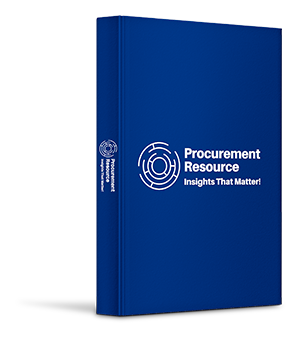Reports

Global Cassava Market: Country Overview; Recent Events; Value Chain Analysis; Production Process; Price Analysis; Indicator Analysis; Market Dynamics: Drivers & Constraints, Innovations & Trends, SWOT Analysis, Porter’s Five Forces; Industry Best Practices: Sourcing Strategy, Procurement Model, Key Factors Influencing the Quotation; Key Supplier Analysis, 2024-2032
Cassava Industry Report by Regional Category Spend, Price Analysis, Key Demand and Price Indicators, and Best Buying Practices
The global cassava market reached a value of about 316.77 MMT in 2021. The industry is projected to grow at a CAGR of around 3% in the forecast period of 2022-2027 to reach a value of about 378.24 MMT by 2027.
The global cassava industry report gives a comprehensive analysis of the industry including key segments, trends, drivers, restraints, the competitive landscape, and other essential market aspects. Cassava is rich in iron, folate, manganese, carbs, and calcium and is a reasonably inexpensive raw material with a high starch content compared to its properties and its international procurement market is driven by its increasing usage in end-use industries. Furthermore, its starch has various advantages, including a neutral taste, high purity, and excellent thickening. The key demand indicator in the industry report is the highest category spender by region—Asia Pacific.
Industry Definition and Segmentation
Cassava is a tropical plant with its roots, leaves, and stems utilised as different variety of foods. Numerous food crops' starchy roots are recognised as the highest energy source (carbohydrates) and can be processed into pellets, chips, flour, and starch. It is primarily consumed raw, with the remainder being processed into starch, flour, pellets, chips, and other items. Toxins are eliminated from the product during processing, increasing its robustness, reducing its weight, and increasing its overall worth. The global cassava industry report comprises segments based on product type (starch, chips, flour and ethanol obtained from cassava), end-use sector (food, feed, and industrial) and geographical (North America, Europe, the Asia Pacific, Latin America, and the Middle East, and Africa).
Asia Pacific, the United States and Africa Regions are Driving the Growth of the Industry
Globally, the largest producer of cassava is Nigeria contributing to approximately one-fifth of the world's production, followed by Thailand, Indonesia, Brazil, Ghana, Congo, among others. Furthermore, Asia Pacific region specifically China, Japan and Indonesia have the largest market importing huge volumes of end-use products such as flour, starch, chips, and pellets. China is also the world's largest importer of such goods whereas Asia is the world's biggest importer and exporter of the same. Thailand, Vietnam, the United States, Costa Rica, China, the Netherlands, Spain, Egypt, Honduras, and Indonesia are among the top cassava exporters globally.
On the other hand, factors like expansion of cassava production will need the market for the crop to fortify more. Most of farmers in countries like Nigeria face shortage of finances to buy planting materials and employ labour assisting them to perform production activities.
Best Procurement Practices
The global cassava industry report by Procurement Resource gives an in-depth analysis of the best buying practices followed by major global cassava products regions across the globe, such as engagement models, contract terms, and buyer and supplier negotiation levers, among others.
Category Management Studies
Cassava is a drought-tolerant crop that can be grown successfully on marginal soils and delivers high yields in locations where many other crops fail. It grows well between 30° north and south of the equator, at elevations between sea level and 2,000 m (7,000 ft), in tropical temperatures, with annual rainfalls ranging from 50 to 5,000 mm (2 to 200 in), and on poor soils with pH going from acidic to alkaline.
In some parts of Africa and South America, these are the prevalent conditions and hence, the areas are good for growing the crop. Also, cassava is a highly productive crop in terms of food calories generated per unit land area per day.
Substantial Demand for Food, Medicines, Adhesives, and Paper, Further Driving the Procurement of Millet
Cassava starch is a prominent ingredient in various culinary products due to its high carbohydrate content. Due to urbanisation, increased working population, and rising household incomes, the global food sector is currently multiplying, particularly in emerging economies such as India and China. This has increased demand for ready-to-eat food products, which has boosted the cassava starch industry's growth. The starch was previously primarily used in food applications; but, due to its widespread availability, it is also utilised in medicines, adhesives, and papers. The market is being propelled forward by growth in these end-use industries and is used for sizing, finishing, and printing in the textile industry because of its flexibility, resilience to abrasion, and ability to create a bond with the fibre. The crop starch is used in finishing to mask imperfections or defects and give the product a finished look. The textile sector expands as the world becomes more westernised, enhancing the cassava starch market.
The major regional markets are North America, Europe, the Asia Pacific, Latin America, and the Middle East and Africa, with the Asia Pacific dominating the overall industry share.
Key Industry Players Mentioned in the Cassava Industry Report
- TCS Tapioca
- Eiamehang Tapioca
- Sunrise International
- PT Buda Starch & Sweetener
- SPAC Tapioca
- Cargill
- Tata and Lyce
Market Landscape
The increasing usage in end-use industries is driving cassava processing. The industry is also being driven by the product's widespread application in the textile industry as a stiffening agent and to increase the threat's weaving efficiency while protecting it. Increased demand from the feed sector has assisted the market to rise. Moreover, it is becoming more popular in the culinary business, pushing increased demand for processed cassava. The flour derived from the crop is used in various pastry products, including biscuits, cookies, and bread. Confectioneries, such as gums and sweets, use the products as well. Besides, it is popularly used to thicken soups, sauces, baby food, gravies, and other recipes.
Key Initiatives by Companies
- The ICAR introduced a novel mosaic-resistant cassava cultivar called Sree Raksha. It has created a cassava type resistant to mosaic disease, common among tapioca plants in this region.
- In the Thai market, Chorchaiwat Industry Company Limited released a new product called Sava Flour. The gluten-free product is an all-purpose starch manufactured from cassava as the primary ingredient. Because the product is gluten-free, nut-free, grain-free, and dairy-free, it can be consumed by those with celiac disease or gluten sensitivity.
1. Executive Summary
2. Cassava Market Snapshot
2.1. Cassava Market Outlook
2.2. Cassava Industry Analysis by Application
2.2.1. Food & Beverages
2.2.2. Animal Feed
2.2.3. Others
2.3. Region Overview
2.3.1. Asia-Pacific
2.3.2. Europe
2.3.3. North America
2.3.4. Latin America
2.3.5. Middle East & Africa
3. Impact of Recent Events
4. Cassava Value Chain Analysis
5. Cassava Production Process
6. Trade Analysis
7. Major Risk Factors in Sourcing
8. Cassava Cost Structure
9. Cassava Price Analysis
10. Key Demand Indicator Analysis
11. Key Price Indicator Analysis
12. Cassava Market Dynamics
12.1. Drivers & Constraints
12.2. Industry Events
12.3. Innovations & Trends
12.4. Swot Analysis
12.5. Porter’s Five Forces
12.5.1. Buyer Power
12.5.2. Supplier Power
12.5.3. Threat of New Entrants
12.5.4. Threat of Substitutes
12.5.5. Industry Rivalry
13. Industry Best Practices
13.1. Sourcing Strategy
13.2. Procurement Model
13.3. Contract Structure
13.4. Negotiation Levers
13.5. Pricing Model
13.6. Key Factors Influencing the Quotation
14. Key Supplier Analysis
14.1. Cargill, Inc.
14.2. Ingredion Inc.
14.3. Tate & Lyle Plc
14.4. Archer Daniels Midland Company
14.5. Tereos S.A
The global cassava market size was valued at 316.77 MMT in 2021.
The industry's main products are cassava starch, flour, chips, and derived ethanol.
The major demand for food, textiles, paper are adhesives are some of the important drivers of the market growth.
Some of the leading players in the market are TCS Tapioca, Eiamehang Tapioca, Sunrise International, PT Buda Starch & Sweetener and SPAC Tapioca.
The food, paper, and textiles of the cassava industry hold the major share in the market.
The global cassava market is expected to grow at an annualized rate pace of 3 percent to 378.24 MMT by 2027. Cassava is gaining popularity in the culinary world, which is driving up demand for processed cassava. Its flour is used in a variety of baked goods such as biscuits, cookies, and bread. The products are also used in confectioneries such as gums and sweets, soups, sauces, baby food, gravies, and other recipes call for it. They are gaining popularity in Asia, America, and Africa in terms of food, sweeteners, papers, textiles. The key players in the global maltose market include Cargill, Inc., TCS Tapioca, Eiamehang Tapioca, Sunrise International, PT Buda Starch & Sweetener, SPAC Tapioca.
Procurement Resources’ detailed research approach explores deep into the industry, encompassing the macro and micro aspects of the industry. Its team of experts uses a combination of cutting-edge analytical tools and their expertise thus, delivering its customers with market insights that are accurate, actionable, and help them remain ahead of their competition.
Compare & Choose the Right Report Version for You
RIGHT PEOPLE
At Procurement Resource our analysts are selected after they are assessed thoroughly on having required qualities so that they can work effectively and productively and are able to execute projects based on the expectations shared by our clients. Our team is hence, technically exceptional, strategic, pragmatic, well experienced and competent.
RIGHT METHODOLOGY
We understand the cruciality of high-quality assessments that are important for our clients to take timely decisions and plan strategically. We have been continuously upgrading our tools and resources over the past years to become useful partners for our clientele. Our research methods are supported by most recent technology, our trusted and verified databases that are modified as per the needs help us serve our clients effectively every time and puts them ahead of their competitors.
RIGHT PRICE
Our team provides a detailed, high quality and deeply researched evaluations in competitive prices, that are unmatchable, and demonstrates our understanding of our client’s resource composition. These reports support our clientele make important procurement and supply chains choices that further helps them to place themselves ahead of their counterparts. We also offer attractive discounts or rebates on our forth coming reports.
RIGHT SUPPORT
Our vision is to enable our clients with superior quality market assessment and actionable evaluations to assist them with taking timely and right decisions. We are always ready to deliver our clients with maximum results by delivering them with customised suggestions to meet their exact needs within the specified timeline and help them understand the market dynamics in a better way.

Global HEOR Service Market: Size, Trend, Analysis and Forecast 2024-2032
The global HEOR market reached a value of about USD 1364.3 million in 2021. The industry is further expected to grow at a CAGR of about 12.81% in the forecast period of 2022-2027 to reach a value of around USD 2779.2 million by 2027.

Global Artificial Intelligence Market: Size, Trend, Analysis and Forecast 2024-2032
The global Artificial Intelligence Market reached a value of about USD 192 Billion in 2021. The industry is projected to grow at a CAGR of around 23% in the forecast period of 2022-2027 to reach a value of about USD 664.86 Billion by 2027.

Global Nutmeg Market: Size, Trend, Analysis and Forecast 2024-2032
The global nutmeg market reached a value of about 134 thousand tonnes in 2021. The industry is further expected to grow at a CAGR of about 4.5% in the forecast period of 2022-2027 to reach a value of around 167 thousand tonnes by 2027.
